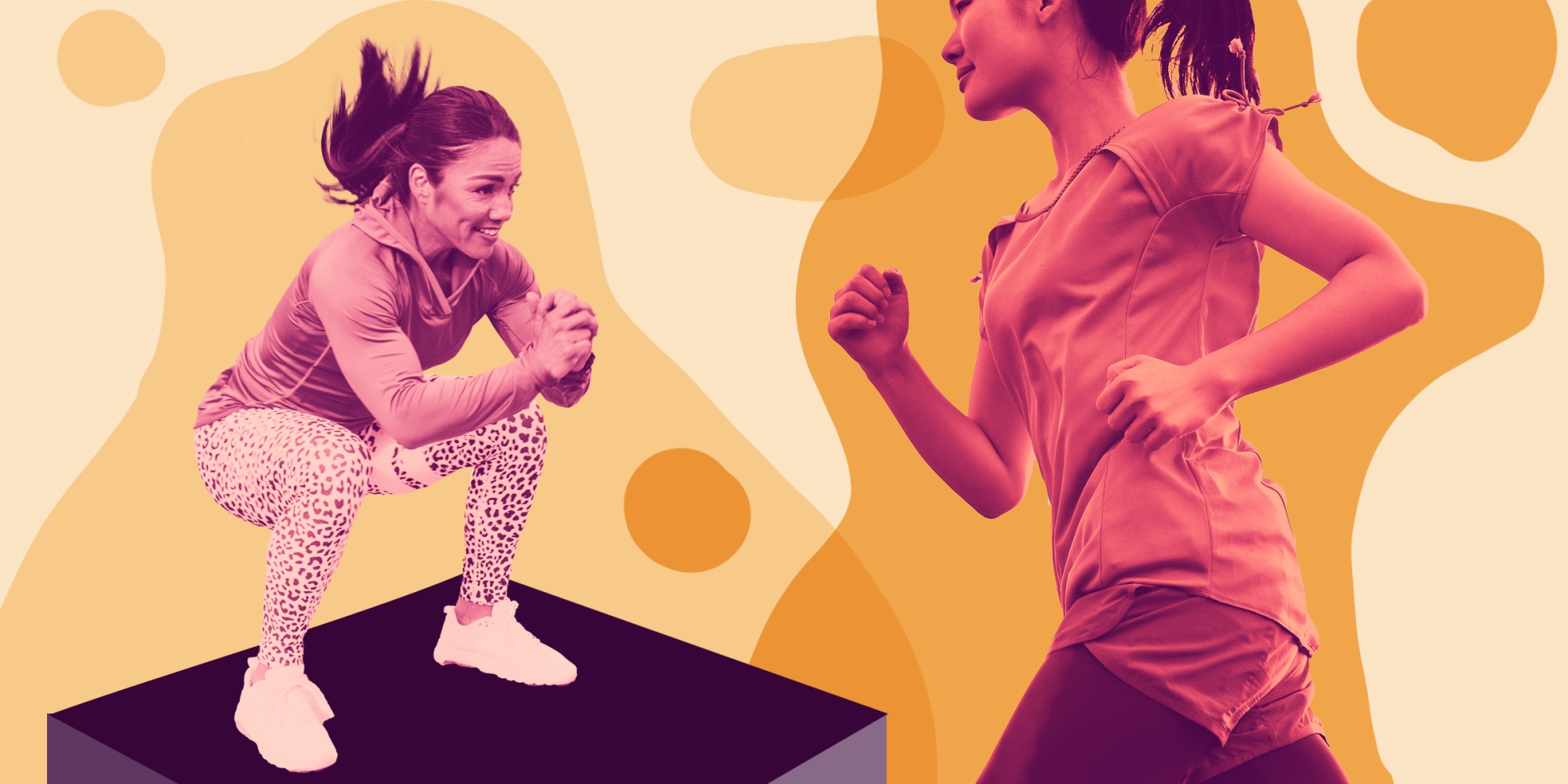Low-Intensity Cardio or HIIT Training?

If you had to pick the better runner — a sprinter or a marathoner — the answer would depend on the type of race. In a 200-meter race, the sprinter will have an edge over the marathoner, but if it calls for, say, 18 miles, the marathoner will outrun the sprinter.
That’s how you should think about high-intensity interval training (HIIT) and low-intensity steady-state (LISS) cardio. One type of workout isn’t necessarily better than the other, but one might be better suited for you, depending on your fitness goals.
What exactly is the difference between HIIT and LISS cardio? HIIT involves alternating between short bursts of intense effort with periods of rest or active recovery. There are many ways to do HIIT, but some of the most popular work-to-rest ratios are 30 seconds of work and 30 seconds of rest, 45 seconds of work and 15 seconds of rest, or four minutes of alternating between 20 seconds of work and 10 seconds of rest (also known as a Tabata).
LISS cardio is low-intensity exercise, such as walking, jogging and cycling, at a relatively easy pace.
“If you’re looking to do a marathon, mud run or endurance-based activity, put some energy into LISS. But if you’re looking to be more explosive, athletic or build muscle, HIIT workouts are best suited to help you do that,” said Rafique “Flex” Cabral, a NASM-certified personal trainer and Isopure athlete.
To help you decide which type of exercise is best for you, here are different scenarios where HIIT or LISS could be more beneficial.
If you’re new to exercise and just want to get moving
Whether you’re a gym newbie or are getting back into working out after a hiatus, LISS is a good way to ease into exercise. Because you’re working at a low intensity, you may be able to work out for a longer period of time and exercise more consistently. HIIT workouts — although shorter — require more effort from your muscles and can be stressful on the joints.
“Older adults experience great results with LISS cardio as it improves their bone density and musculoskeletal health, in turn promoting healthier aging. These benefits also allow for a cost-effective means in promoting positive improvements in the ability to carry out activities of daily living,” said Lisa Reed, MS, CSCS, a performance coach and owner of Lisa Reed Fitness, LLC.
If you want to lose weight and rev up your metabolism
Doing any type of LISS cardio will burn calories, helping you achieve the calorie deficit you need to lose weight. But turning up the intensity of your workout is ultimately going to help you burn more calories, giving HIIT an edge.
“LISS is great for improving endurance activities and cardiovascular work capacity, and aids in recovery and weight loss. But if you’re trying to gain muscle, which helps burn fat, LISS may not be the best thing to add into your routine frequently,” explained Cabral.
HIIT helps you build and maintain moderate amounts of lean muscle mass. It also produces an afterburn effect called excess post-exercise oxygen consumption (EPOC), said Cabral. EPOC is the amount of calories you burn long after your workout is over, and HIIT is the most effective workout for stimulating EPOC, according to the American Council on Exercise.
The after-burn effect of EPOC can last anywhere from 12 to 48 hours, according to the ACE. “[With HIIT] you will produce an after-burn effect with 25 percent more calories burned post-workout compared to going for a run or walk,” said Reed, and your metabolism can be boosted by up to 10 percent for three days after a HIIT workout. “Maintaining a routine that involves HIIT training three to four times a week will help compound that post-workout effect on your metabolism,” Cabral explained.
If you want to boost your athletic performance
“Incorporating resistance training into your HIIT workouts can help build and maintain muscle, particularly your type II fast-twitch muscle fibers, which are necessary for athletic movement,” Cabral said.
You have two different muscle fibers: type I (slow-twitch muscle fibers) and type II (fast-twitch muscle fibers). Your type I muscle fibers are built for endurance activities, such as running a marathon and biking long distances, while type II muscle fibers are made for quick, explosive movements. Think: sprints, jumps and heavy lifts.
So if you have your sights set on improving the height of your jumps or increasing the load of your deadlifts, then HIIT is the way to go.
That said, HIIT is extremely taxing on the body, so you shouldn’t do it every day. Doing HIIT two to three times a week is more than enough, and you should aim to recover at least 48 hours between your workouts, per the ACE.
LISS cardio is a great way to add variety to your workouts and prevent over training. Mixing in some low-intensity work, like walking or doing a leisurely bike ride or swim, allows you to get some movement as your muscles repair.
If you don’t have a lot of time to exercise
What’s great about HIIT is that you don’t have to work nearly as long as LISS cardio to get an effective workout, and you can customize your workout with different exercises and pieces of equipment.
“HIIT workouts are an excellent way to increase your workout intensity in a short amount of time — 20 minutes or less. You can also keep things interesting by switching up the sequence or swapping out different exercises from strength to high-intensity movement,” Reed said.
For example, doing a HIIT workout that involves doing squats followed by jumping rope will blast fat, burn calories, and activate muscle strength, Reed said.
In fact, a small study in the Journal of Strength and Conditioning Research compared the calorie expenditure of nine healthy men doing 30 minutes of strength training, endurance cycling, endurance running on a treadmill, and HIIT training. The results showed that HIIT burned more calories than the other three workouts, suggesting that you can burn more calories with a 30-minute HIIT workout than doing steady-state cardio in the same amount of time.
That’s not to say that you can’t get a great workout with LISS cardio, too. LISS cardio can help you get more movement into your day while reaping the benefits of exercise. But HIIT can be helpful if you want to get more out of your workout in less time.
How can you make your HIIT and LISS workouts more challenging?
To level up your LISS cardio workouts, Cabral recommended adding different types of activities into your routine, like running, biking, swimming and rowing.
When it comes to HIIT, Cabral said experimenting with different variables can spice things up. Some ideas: “Decreasing the rest time while increasing the work time or increasing both the work and rest periods, adding more rounds, and increasing the weights for strength-based movements,” Cabral said. “HIIT workouts
How many times a week should you do HIIT and LISS training?
Reed recommended incorporating both LISS cardio and HIIT into your workout routine to reap their health benefits. “My philosophy has always been that every little bit counts. Walk for at least 30 minutes, five times a week and perform a HIIT workout two to three times per week [for] 10 to 20 minutes per workout,” Reed suggested.
Another great way to add both LISS cardio and HIIT into your routine: Perform a 15-minute HIIT workout followed by 30 minutes of LISS cardio. “You will be burning more calories from fat when you follow HIIT with any LISS activity,” Reed said.
Cabral recommended following a 2:1 HIIT to LISS ratio for building muscle, and if your goal is more endurance-based, reverse that ratio.
For beginners, Cabral suggested working out two to three times a week, working your way up to three to five times per week.
“Your fitness goals will determine the balance of what you need to be able to look and perform the way you want. Everyone is different, so finding that balance might take a little trial and error, which is ultimately worth it when you find what works best for you,” Cabral said.
The post I want to lose weight. Should I be doing low-intensity cardio or HIIT training? appeared first on TODAY.

